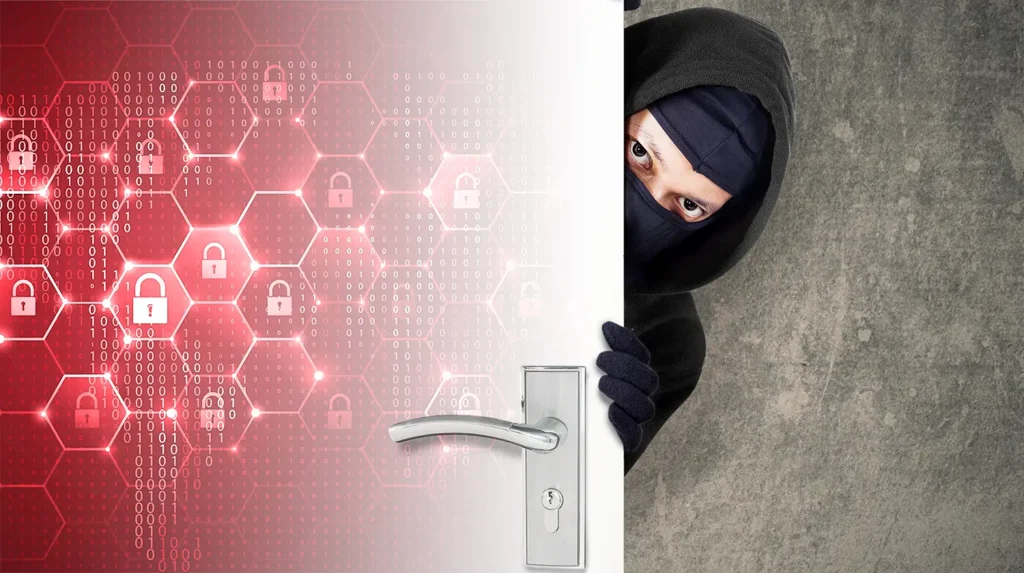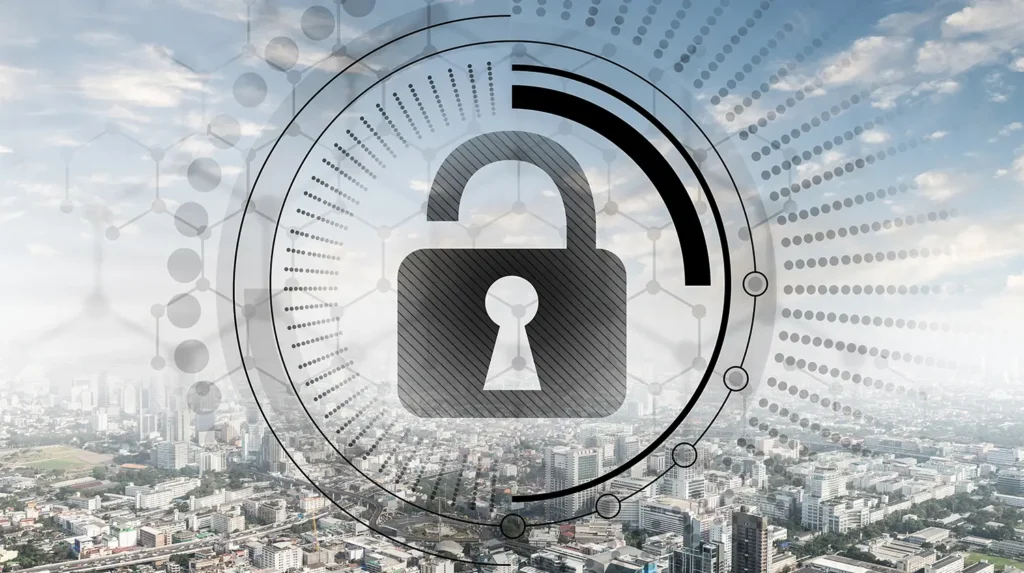“Piggybacking” is a security term for when an unauthorized person follows an authorized person into a restricted area to gain access. It’s often due to a lapse in judgment or politeness. Understanding piggybacking helps businesses, apartment buildings, facilities, and other commercial spaces have tighter security protocols. In this article we’ll explain piggybacking, the risks, how it happens, and how to prevent it.
Key Takeaways
- Piggybacking is a security risk where unauthorized people follow authorized people into restricted areas, exploiting human behavior and social norms.
- To prevent piggybacking, organizations must have robust security in place, including physical barriers, advanced authentication tech, and employee training.
- Security personnel are important to monitoring and preventing piggybacking incidents.
- Understanding the difference between piggybacking and tailgating and having a culture of awareness among employees is important for overall security and compliance.
What is Piggybacking?

Piggybacking is when someone unauthorized follows an authorized person into a restricted area, and they are not stopped, often out of politeness or a moment of weakness. It bypasses all the security protocols.
Imagine walking into your office and holding the door open for someone you don’t know, assuming they belong there. It’s a nice gesture, but it could also be a piggybacking attack and an accidental instance of unauthorized access to sensitive areas and information.
Piggybacking takes advantage of human behavior and social norms, and that’s why it’s a big security risk- because unauthorized people manipulate others to get access. Understanding how it works, and the risks, is key to security.
How Piggybacking Happens
Piggybacking is social engineering where attackers manipulate emotions and behavior. Techniques include impersonating trusted people, creating urgency and exploiting the desire to help, so the unauthorized person can get in. An attacker might pretend to forget their access card and ask a “colleague” to hold the door open.
Usually, an authorized person holds the door open for someone they think is legit- and that can lead to a serious security breach. Attackers also exploit distractions or lapses of judgment, like when an employee is busy or in a hurry, so an unauthorized person gets in to get unauthorized access.
Piggybacking is caused by lack of knowledge of security protocols and not enough training on identification verification. Educated employees can stop this.
Risks of Piggybacking
Piggybacking is risky, leading to data breaches, theft of sensitive information and sabotage of critical systems. If you don’t prevent these, you could face legal action, fines and even imprisonment.
In addition to legal repercussions, piggybacking can cost you money and damage your reputation. Strong security and a culture of awareness among staff is key.
Piggybacking vs Tailgating

While often used interchangeably, tailgating and piggybacking are different. Tailgating is an unauthorized person following an authorized person without their knowledge, while piggybacking is an authorized person allowing unauthorized entry.
Both tailgating and piggybacking exploit access control weaknesses so unauthorized people can get past security. These can be big breaches, so it is important to have strong access control and watchful eyes.
Tailgating is especially common in multifamily residential communities when parking garages or community entrances themselves have gated access. Vehicles will often “tailgate” behind a vehicle that has entered, attempting to quickly gain access without authorization.
Understanding the difference is key to a good security strategy. The following sections will cover the details of tailgating and common myths.
Tailgating Characteristics
Tailgating is when an unauthorized person follows an authorized person into a restricted area. This happens when the authorized person doesn’t make sure the entrance point closes behind them. This can be a gated community, access-controlled entrance, or other point where authorized persons need a key, fob, code, or other method to gain access.
For example, an employee swipes their access card, and an unauthorized person follows before the door closes. Even if accidental, the risks are big, so it’s important to be aware and follow the protocols.
Common Myths
Many people think tailgating always comes from a place of malicious intent. It can also be unintentional, like when an employee lets someone follow them through an access point. Businesses need to mitigate both intentional and unintentional breaches.
Another myth is that preventing tailgating and piggybacking is the job of security personnel only. Every employee has a role to play in recognizing and preventing unauthorized access. Security awareness and training are key.
Security to Prevent Piggybacking

Piggybacking is a threat that challenges a combination of tech and physical security. Physical barriers, advanced technology and video surveillance reduce the risk of entry.
State and Federal Regulations often require specific security measures to prevent unauthorized entry. Compliance with those regulations will help keep you out of legal trouble and keep your facilities and data safe.
Let’s get into the details.
Physical Barriers
Physical barriers like turnstiles and speed gates are an important part of controlling access and stopping unauthorized entry into restricted areas. They only allow one person to go through at a time, so they help prevent unauthorized entry.
Physical barriers like turnstiles and security gates are the first line of defense in any physical security strategy. By controlling access points, you prevent piggybacking and only authorized people gain entry to secure areas.
Authentication Technologies
Authentication is key to securing entry points and preventing unauthorized access. Access control systems like badge readers and biometric scanners ensure only authorized people enter restricted areas. Biometric scanners, with fingerprints or facial recognition, are the most effective.
Biometric data and other advanced authentication technologies combined with physical barriers will help prevent unauthorized access and reduce the risk of tailgating and piggybacking.
Video Surveillance and Monitoring
Live video monitoring and surveillance is part of a complete and proactive security solution. Cameras and smart surveillance systems can detect and respond in real time to attempts at unauthorized entry. Advanced video analytics can spot unwanted people and make it easier to prevent piggybacking.
Live video surveillance and monitoring can work alongside other solutions, like guards, access control, and other security measures to optimize performance.
Employee Training and Awareness

Employees are the first line of defense against unauthorized access. A strong security culture is about educating employees on their role in security and awareness of access controls.
Regular training and staff vigilance will help combat piggybacking and other security threats.
Regular Security Training
Regular training means employees know what to look out for like tailgating and piggybacking. Training can include real life scenarios and simulations to help employees respond to a breach. Sessions or email reminders can reinforce the measures and keep employees on their toes and informed.
Employees need to know not to share credentials and follow security protocols for restricted areas including proper authentication. Clear communication of their roles and responsibilities will help to have a common approach to prevent unauthorized access.
Encouraging Vigilance
Employees need to be vigilant. Get staff to report suspicious activity straight away and potential breaches will be prevented, and responses will be faster. A security aware culture where every employee feels responsible for reporting threats is vital to security strategy.
Innovative Solutions for Security

Advanced access control systems with multi-factor authentication like biometric and intelligent video surveillance prevent unauthorized entry. These technologies ensure only authorized people enter restricted areas and increase security.
Gamification in training can simulate real world scenarios and get employees to understand security threats better. Combining technology with training gives you a robust security culture that prevents incidents like piggybacking.
Advanced Access Control Systems
Facial recognition, biometric authentication and video surveillance are added to physical security to control access. These systems ensure only authorized people enter restricted areas.
Integrated Security Platforms
Multi-layer security platforms combine access control and video for full protection. By combining all the layers these platforms prevent piggybacking and tailgating.
Full security platforms offer a single approach, combining technologies and layers for full protection. When used together, a variety of layers of integrated security platforms reduce vulnerabilities and overall risk.
Legal and Compliance
Your business can lose both money and suffer reputation damage from security breaches like piggybacking. Following the legal frameworks and compliance standards and preventing unauthorized access will help you to avoid penalties. Noncompliance with security standards will get you in trouble.
Unauthorized access laws differ by jurisdiction, some explicitly prohibit piggybacking while others are vague. Know these legal standards to address any piggybacking risks at your business.
Legal Ramifications
Not securing your networks will get you sued for data breaches and can even result in criminal charges. You have a legal obligation to secure your networks from unauthorized access, and if you don’t, you could face serious legal consequences.
Cybersecurity and physical security are a must to mitigate risks and meet compliance standards.
Ultimately, business owners and operators need to understand and prevent piggybacking and tailgating to have the most robust physical security. These security threats use social norms and human behavior to manipulate employees, so you need to have extensive security measures that include video surveillance, advanced authentication and physical barriers, and regular employee training. Creating a culture of security awareness through training can enable staff to detect and prevent unauthorized access.
Questions about piggybacking, tailgating, access control, or other commercial security issues? Contact us today for details on how to protect your business with live video monitoring.
Frequently Asked Questions
What is the difference between piggybacking and tailgating?
Piggybacking is when an authorized person allows an unauthorized person to enter while tailgating is when an unauthorized person enters by following behind someone who is authorized without permission.
How do organizations prevent piggybacking?
Organizations can prevent piggybacking by having physical barriers, using access control systems, installing video surveillance and regular employee training.
These will create a secure environment that prevents unauthorized access.
Why training is important to prevent piggybacking?
Training staff is important to prevent piggybacking because it equips them with the skills to detect and report unauthorized access which in turn increases their vigilance and overall security awareness.
By training regularly staff will be sharp and ready to fight off potential security breaches.
What are the legal implications of not preventing unauthorized access?
Organizations that don’t secure their property from unauthorized access will face serious legal consequences, fines and possible liability for data breaches.
You must have extensive security measures in place to mitigate these risks.
What technologies can improve access control?
Biometric authentication, facial recognition and intelligent video surveillance are advanced technologies that can improve access control by preventing entry.
Implement these technologies and you’ll have a more secure environment.

